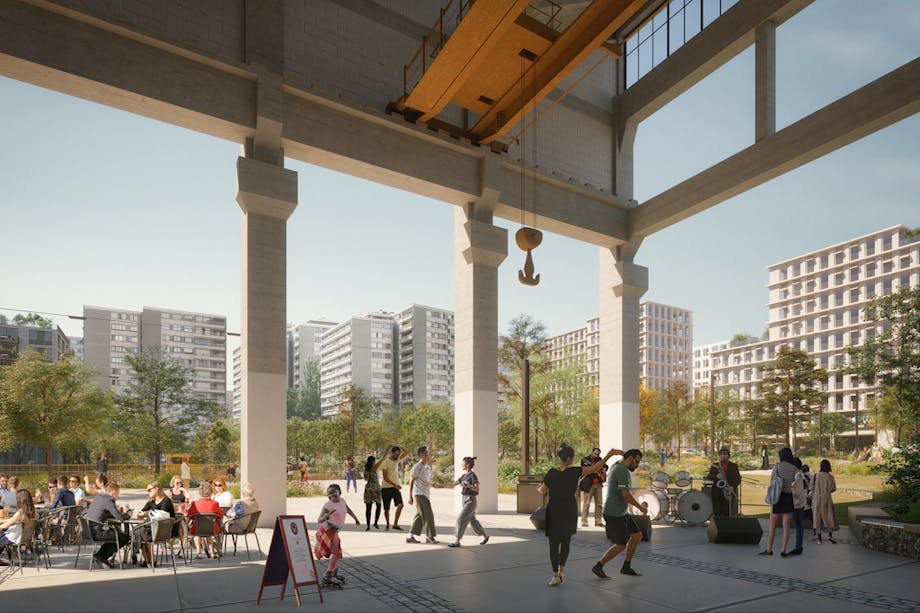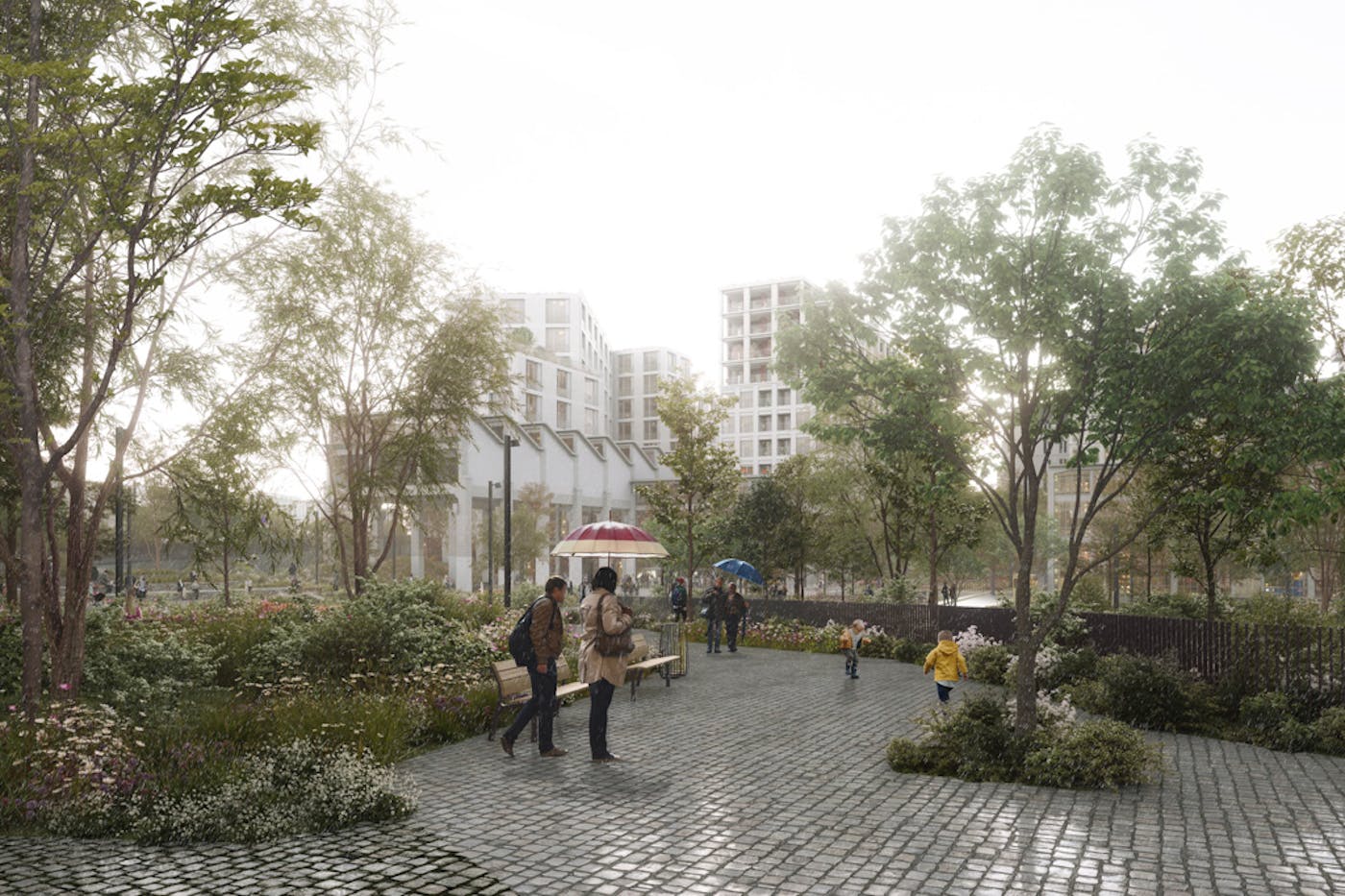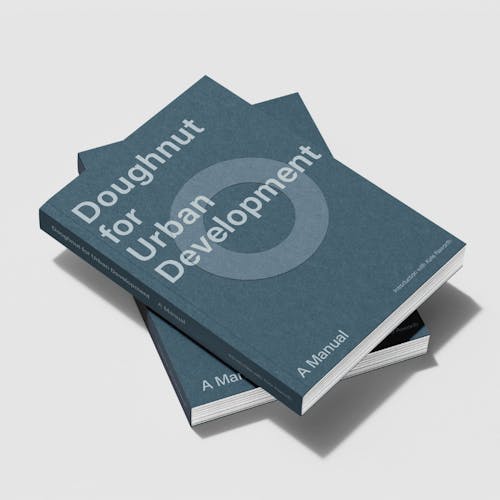Ordener-Poissonniers
Our 'Jardin des Mecanos' Masterplan transforming Paris' old railway site into an ecosystem neighborhood.
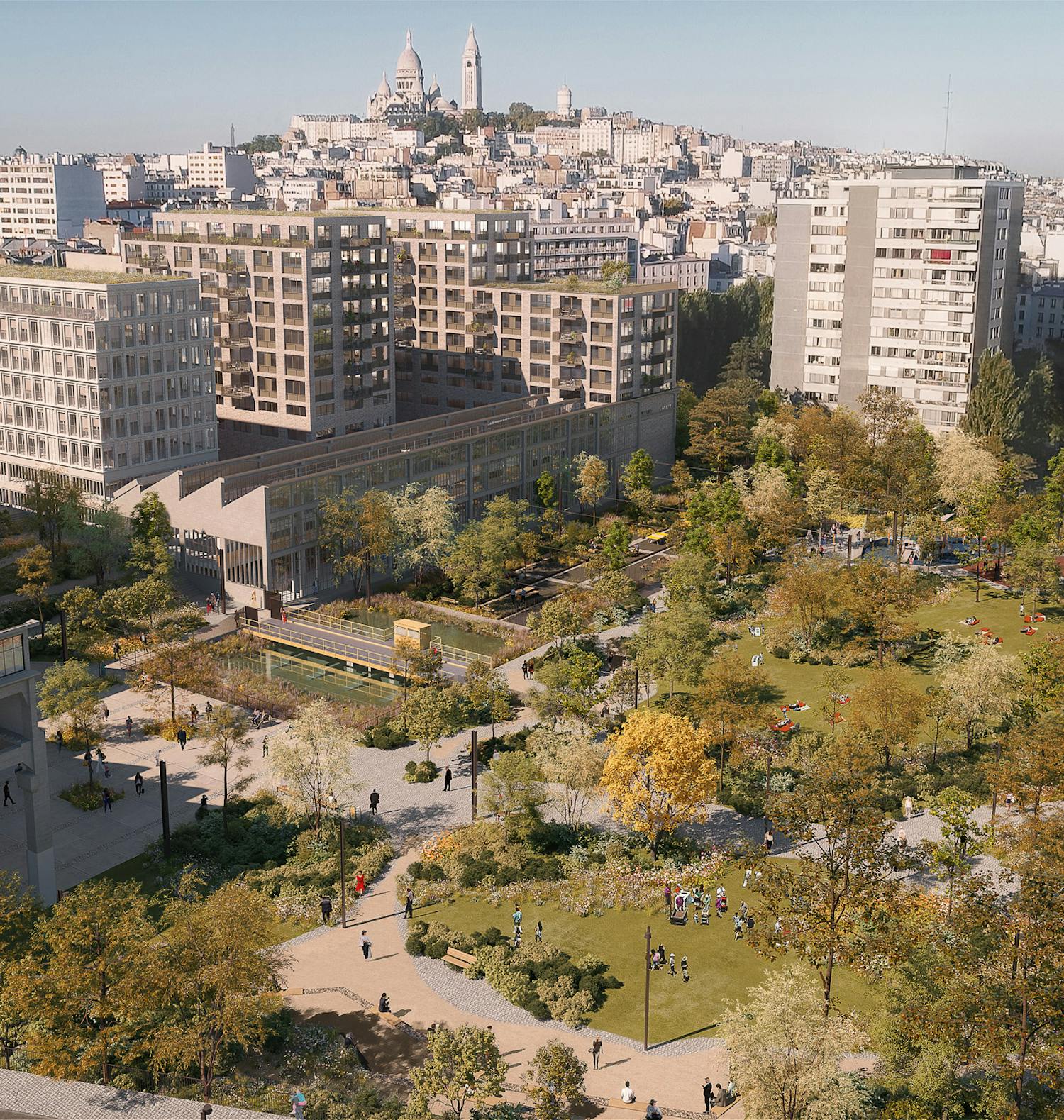
Curious for more?
Line Agnes Bjørløw Skjærlund
Head of Business Development, Associate Partner
Location
Paris, France
Size
3,7 ha
Year
2016 — 2024
Client
The City of Paris, SNCF Real Estate and Espaces Ferroviaires (site developer). Emerige, Ogic (developers)
Role
Landscape design lead, from competition to delivery
Partners & Collaborators
TN Plus, Biecher Architectes, Niney et Marca Architectes, Bourbouze & Graindorge and AAVP, OASIIS, Attitudes Urbanines, OTEIS
SLA is transforming the old central railway site in District Ordener-Poissonniers into a new carbon neutral and nature-based ecosystem neighborhood in Paris. The neighborhood will house 1000 new residents, offer big public parks, offices, theater, public school, industrial design incubators, a graduate school of design, food courts and urban farming – all in the heart of Paris.
The green public spaces are designed to offer a free, common good for residents, workers and visitors alike. Placed in the densely populated 18th arrondissement, the public spaces will act as a green lung for the neighborhood and provide ecosystem services such as cleaning of air pollution, natural urban cooling, cloudburst management, strengthened biodiversity, stronger social integration and diversity. The public spaces will optimize the local microclimate all year round, making the neighborhood a better and healthier place to live and work.

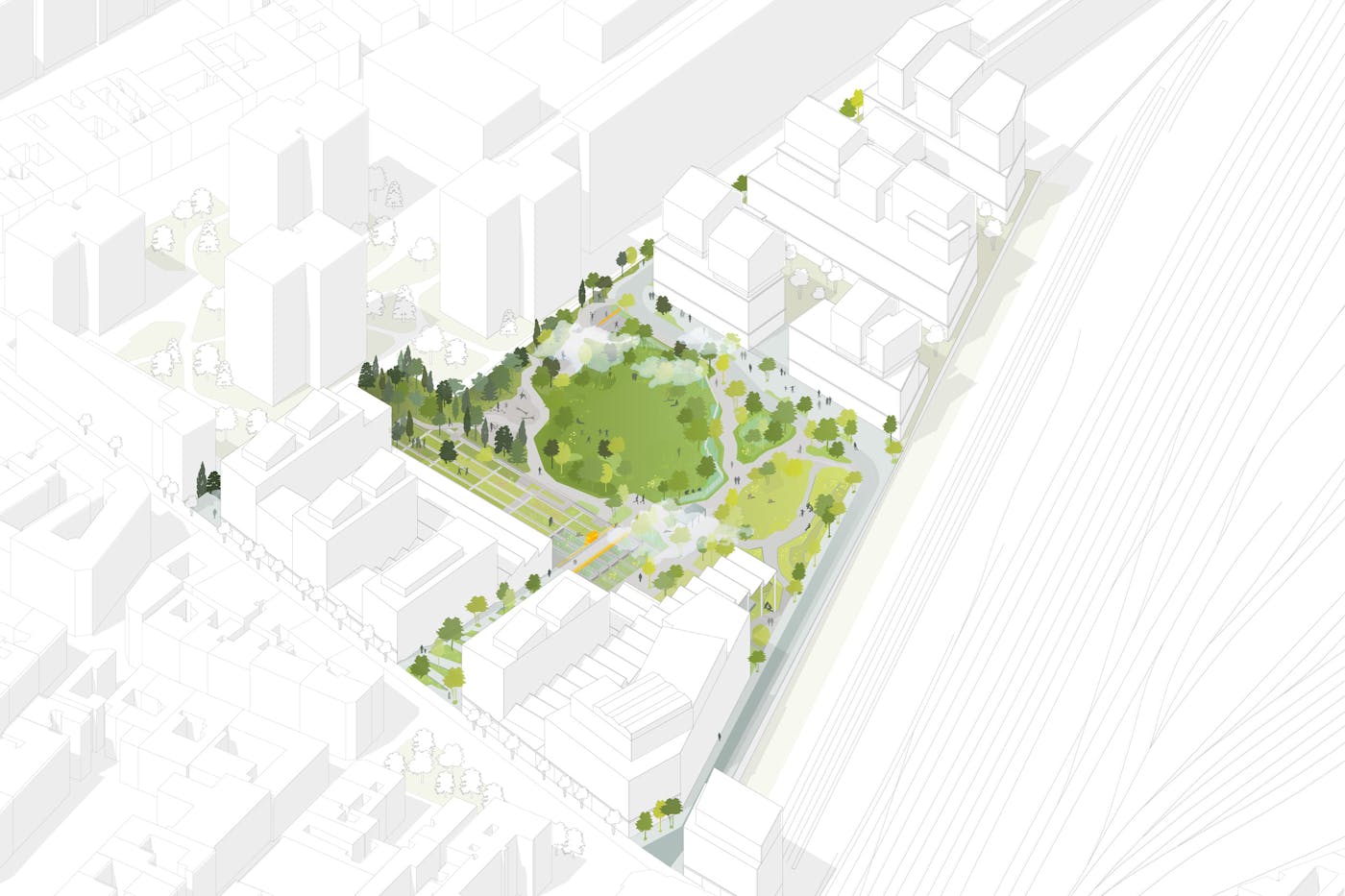
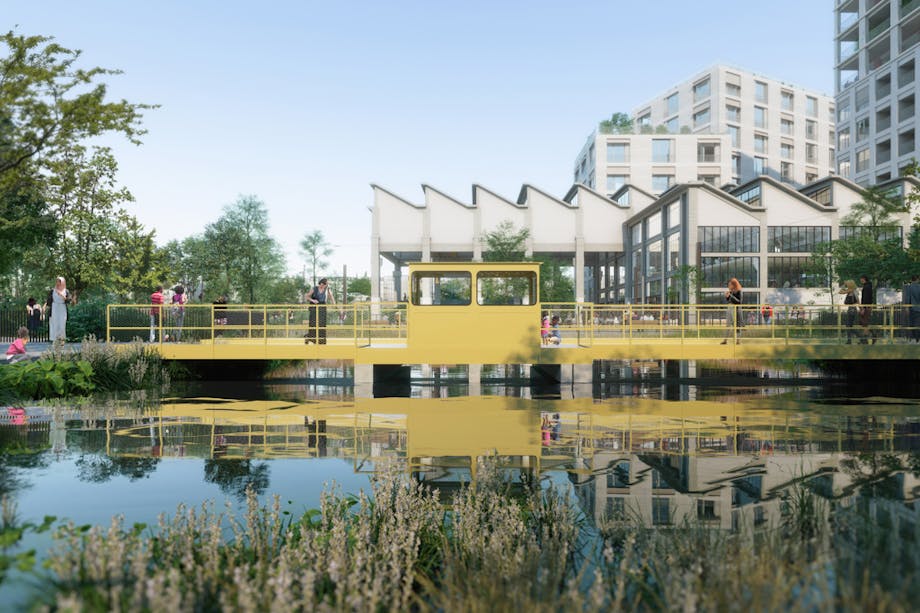
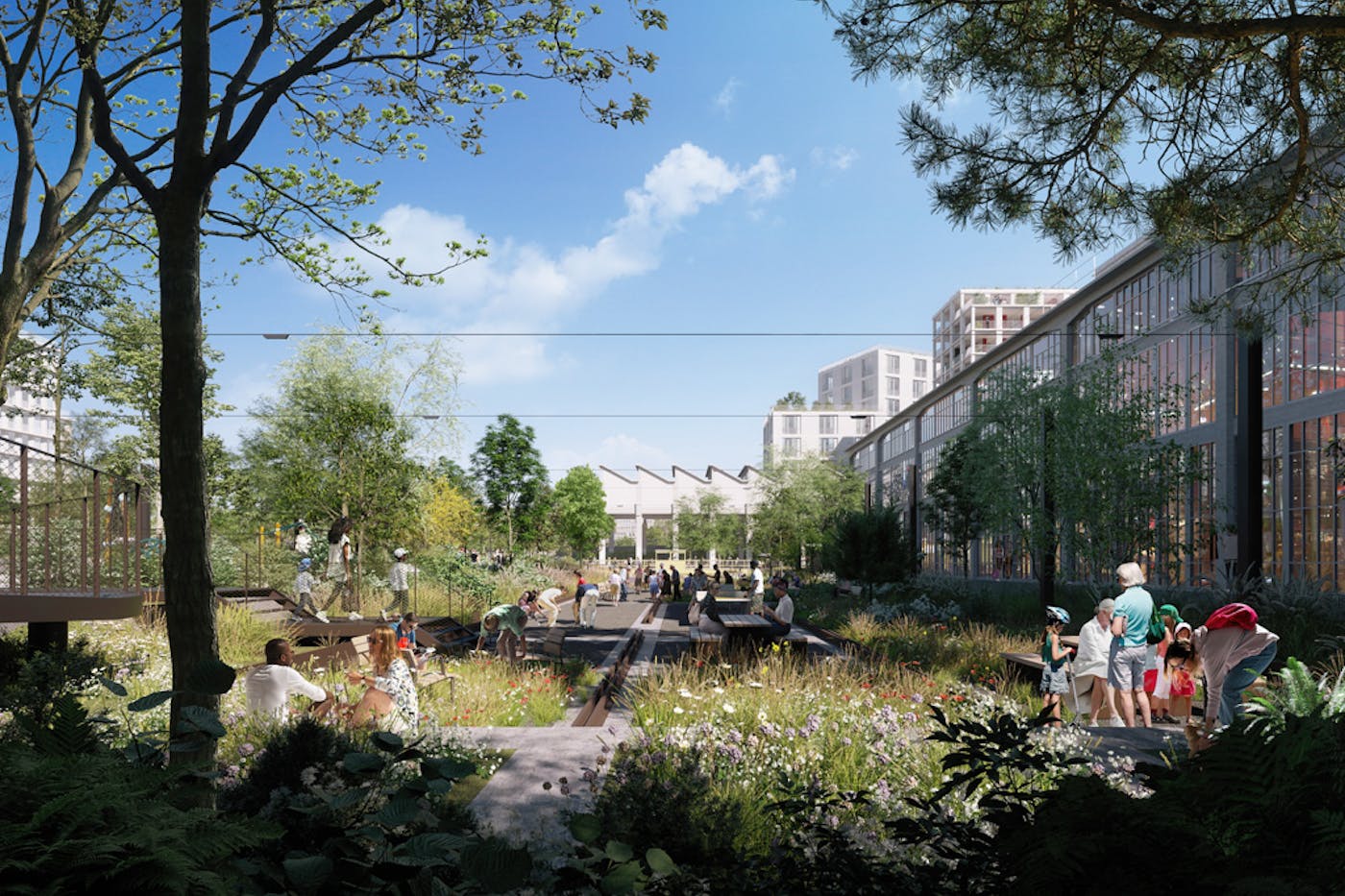
The public spaces reinterpret the traditional Paris cityscape and strengthen the values and the qualities of the original railway site. Its central atmospheres, materiality, topologies and elements such as railway tracks, a trolley ferry trench, railway signals and other industrial remains are reused to create a distinct and unique urban quality specific to the Ordener-Poissonniers site.
At the heart of the neighborhood is the “Jardin des Mecanos” (“Mechanical Garden”). The 10,000 m2 park creates a new urban ecosystem by preserving the site’s remarkable industrial heritage while adding an abundance of green, nature-based public spaces and carbon-neutral architecture, fostering an inclusive and resilient urban development for the heart of the 18th arrondissement of Paris.
Visualizations: LUXIGON.
